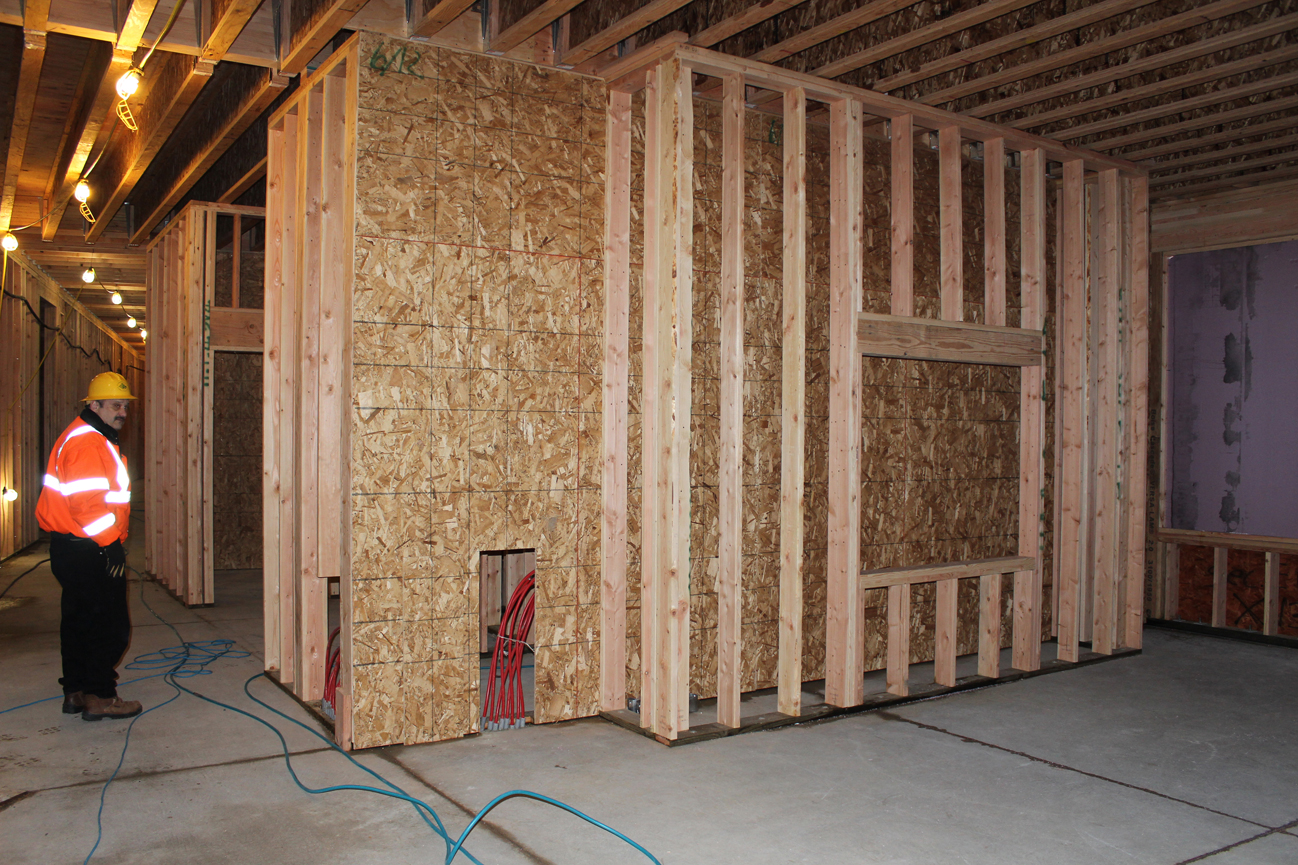By Jerzy Shedlock
Morris News Service – Alaska
Kenai Peninsula College’s Kenai River Campus is set to become the most technologically advanced training facility in the university system. The new Career and Technical Education Center, scheduled to open in August, will house a state-of-the-art oil water separator. The two-story device will replace the college’s old separator. It simulates real-world process technology scenarios.
Ultimately, the separator will strengthen an already popular program, said KPC director Gary J. Turner.
“It’s real world experience,” Turner said. “We do a great job of that now, and the major oil companies call our program the best in the country. This is going to make the college even better.
“(It will be) one of the most sophisticated buildings in the university system.”
Two construction projects at the college in Soldotna are moving forward as scheduled. The technology center and a new student housing building cost more than $33 million. They will offer amenities once unavailable at the small college.
The student housing building is about 40 percent complete, said KPC construction manager Phillip Miller. The exterior framing and roof are nearly finished, he said.
The 39,000 square-foot facility is being constructed to the tune of $17.8 million. It includes 96 rooms, with 24 four-bedroom suites; single rooms for six resident advisors; a workout area; a larger kitchen for group gatherings; and multiple lounge areas. The college awarded the housing construction contract to Bristol Environmental Remediation Services, a limited liability corporation of the Bristol Bay Native Corp.
Workers are currently fitting the building’s plumbing, electrical and heating components. They’re working from one end of the building to the other, so a portion of the dorms were bustling with activity Tuesday while the opposite end was silent.
At the core of the building, where a reception desk and a lounge area with a fireplace will be located, a large empty column is situated next to a staircase. An elevator will eventually fill the space.
The building, Miller said, is fully accessible and adheres to the Americans with Disabilities Act, the reason for the elevator. It also includes ADA rooms, with
more space for mobility.
The college hired Tammie Willis as its associate director of residence life, who was the assistant director of residence life at Northeastern State University in Tahlequah, Okla. She will arrive on campus Jan. 14. Willis will direct all aspects of the Residence Life Program, including supervising staff, facility maintenance and budgeting.
A Residence Life coordinator will be hired in April. The full-time position requires the individual to live in the dorms. As a result, the room includes separate outside access for privacy.
In May or June, the search will begin for a rural student services coordinator. That person’s job is to recruit rural and off-the-road-system students. The college is a great choice for students who grew up in the Bush, Turner said. The class sizes are smaller at 12 to 15 students, he said.
“We’re seeing more people from rural communities and the Lower 48. We need residential space; we have anchor programs,” he said.
The current stage of construction will last about six to eight weeks, Miller said. Next, workers will insulate, drywall and paint the building. Miller plans to fabricate a model dorm room in the college’s main building during the coming weeks.
The college plans to rent out the dorms for training events and conferences in the summer.
The tech center is about 40 percent complete as well. The roof is complete, but construction of the exterior walls is somewhat stymied due to a siding shortage — the manufacturer suffered a setback in November and has struggled to recuperate. The delivery date of the project has not been affected by the siding shortage, Miller said.
Soldotna-based contractor Blazy Construction is managing the technical center project. The total project cost is budgeted for $15.25 million.
Plastic sheets are draped over the exterior of the building, as workers continue to
work on electrical components. Interconnectivity is key to the building’s academics.
Three programs are moving to the technology center from the campus’s main building: process technology, instrumentation and electronics.
Students will manipulate instruments in one classroom of the building, which will, in turn, affect change in a device like the oil water separator.
“Basically, cause and effect in all three labs,” Miller said.
“If a worker in process tech at one of the refineries is sitting in the operator room, he’s able to control different things at different places in the plant. (The new building) does the same… It’s complete simulation of multiple processes.”
Steel beams are left exposed in the building’s interior. Students should feel like they’re at work, Turner said. The dorms are for comfort; the labs are intended for learning, he said.
The wiring of the technical center is accessible for classroom simulation, but also so the technology can be easily upgraded as the oil and gas industry advances, Turner said.
An older oil water separator located in the campus’s main building will be dismantled and removed.
The nursing and paramedic programs at the college will have increased space to use as the process technology programs make the transition. Those medical programs are in high demand.
“It gives us more space to simply have a better learning environment, more space for simulation,” Turner said. “We’re really big into simulation.”
The college will hire an extra custodian to take care of both new buildings. No additional staff or faculty will be hired for the technology building.
The estimated cost per square foot of the buildings is $325 for the technology center and $225 for the dorms. Those estimates include much-needed infrastructure upgrades. An old gravel pit was redeveloped and a drainage basin that carries runoff away from campus were established before the buildings’ construction began.
University buildings are constructed to last upwards of 50 years, Turner said.
Jerzy Shedlock is a reporter for the Peninsula Clarion.


